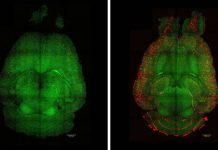The human immune system is an intricate web designed to stop invading pathogens – but with over 200 virus species capable of infecting humans, some have a way to break through
In a study from Northwestern University, scientists have discovered a key mechanism used by the Zika virus to evade the antiviral response of the cell it is attacking.
The finding will contribute to a better understanding of how the viruses infect cells – overcome immune barriers – and replicate it. The work is therefore invaluable in the future fight against a number of viruses, including COVID-19.
Zika Virus
Identifies in 1952, Zika Virus is a member of the Flavivirus family that includes dengue, hepatitis C, yellow fever and others and is responsible for one of the most recent viral disease outbreaks prior to SARS-CoV-2, and unlike COVID-19 there are no vaccines or drugs for Zika disease.
Published in the Journal of Virology, the research reveals how the virus suppresses interferon signalling allowing it to gain access to the cell much easier. Identification of this specific virus-host interaction offers a new target for antiviral therapeutics.
Targeting how viruses shut down cells
The North-western paper describes how Zika virus, through a protein called NS5, targets a cellular antiviral immune response mediator, STAT2, to escape detection by host cells. The virus’ NS5 protein degrades the cellular host’s STAT2 protein, effectively shutting down the cell’s protective interferon response.
STAT2 is a crucial part of a cells interferon response and a common target of Zika, dengue and other Flaviviruses.
Curt Horvath, and the team used a number of techniques such as molecular biology, biochemistry and fluorescence microscopy, coupled with virus infections to characterize Zika virus-mediated immune evasion and to dissect the essential components of the Zika virus-STAT2 interaction.
Connection between Zika and COVID-19?
“Zika is a simpler virus than SARS-CoV-2, but SARS-CoV-2 does a lot of the same things to suppress the antiviral response,” Horvath said.
“SARS-CoV-2 also does much more, which is one of the reasons it’s more harmful to us. Understanding how one virus escapes or modifies the host antiviral response may help us learn about other viruses and also contribute to pandemic preparedness.”
This research may open the door to a number of new ways to fight infection and possibly enable the formulation of new vaccines or antibody therapeutics.








